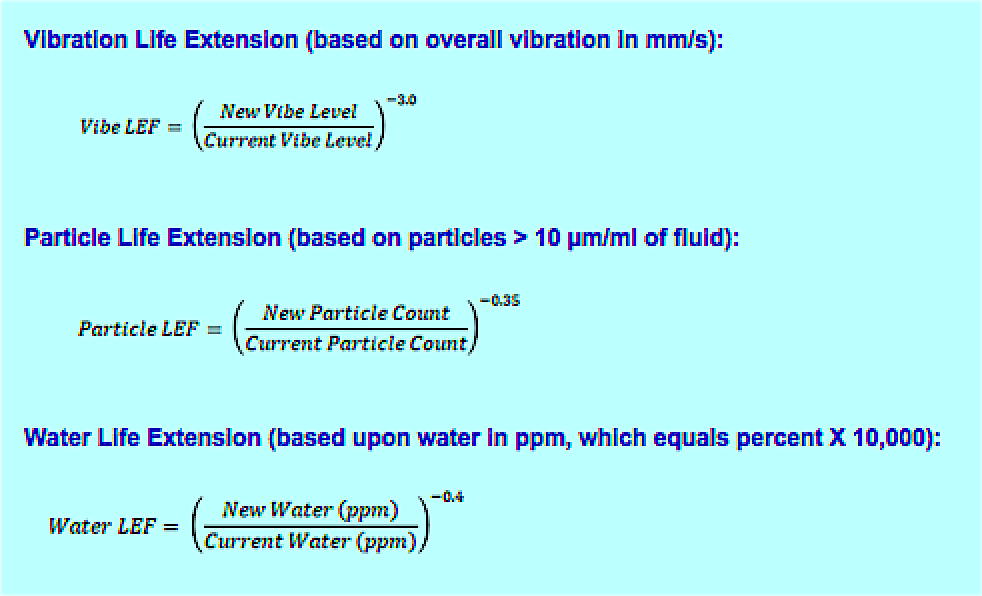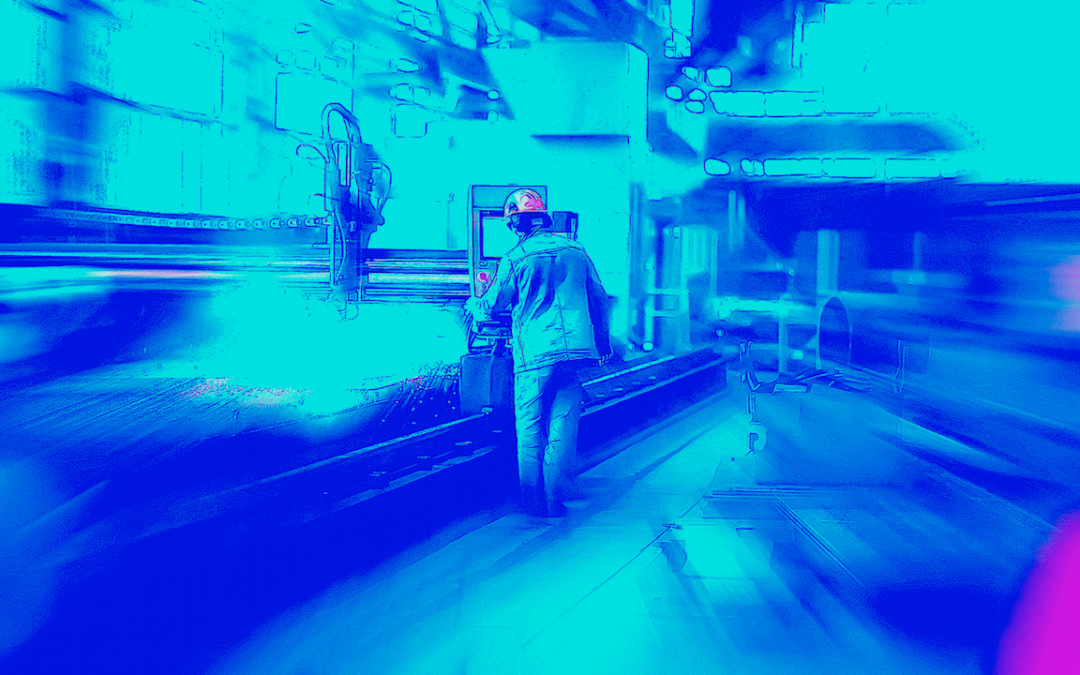Happy New Year! It’s the time when we tend to reflect on the past year and resolve to make changes that will make this year even better. It’s particularly beguiling that this is the year “2020”—which is the term that optometrists and ophthalmologists use to suggest clear vision. I challenge members of the RAM community to dedicate yourselves and your organizations to a serious focus on proactive and precision maintenance.
In my last article for The RAM Review (see link below), I summarized approximately 70 optimum reference states (ORS) on which you should focus to manage the mechanical and electrical aspects of the fasteners, lubrication, alignment and balance (FLAB)— the foundation of precision maintenance. Let’s discuss why this is so important to you and your operations.
Click Here to Read the Article
“Optimum States for Precision Maintenance.”
PRECISION MAINTENANCE 101
Smooth, quiet, cool-running machines sum up our goal for precision maintenance. Achieving that goal confirms that we are effectively controlling unproductive uses of energy, which result in friction and manifest as vibration, acoustic emissions, and the generation of heat. Doing so enables us to proactively extend the life of our equipment. Consider these rules of thumb for calculated life-extension potential in mechanical systems:
- Reducing mechanical vibration (velocity, mm/s) by 20% doubles the life of mechanical equipment.
- Reducing water contamination in lubricating oil by half extends machine life by 30-35%.
- Cutting particle contamination in lubricating oil by half yields another 20-25% extension in machine life.
- The rate at which chemicals degrade, g., motor insulation, elastomers, etc., is halved for every 10 C-deg. reduction in temperature.
- A 3% phase-to-phase voltage imbalance effectively de-rates a 100-kW motor by 10%, reducing it to a 90-kW-rated motor and increases operating temperature by 18%.
These are just a few of the important relationships between precision maintenance and equipment life. It’s simple physics: Control the sources of vibration, heat, abrasion, and material fatigue and deterioration and you’ll extend the life of your equipment.
This is not new information, which causes me some concern. Why have so few organizations truly committed to managing the root causes of failure, which are really very easy and inexpensive to manage? Regardless of the answer, I have the following precision-maintenance challenge for you to include as a part of your New Year’s Reliability Resolution.
RELIABILITY RESOLUTION PRECISION-MAINTENANCE
NEW YEAR’S CHALLENGE
1. Select a representative sampling of machines in your plant to serve as the experimental group.
2. Thoroughly baseline the following measurements under defined operating conditions:
a. vibration readings from multiple locations and components
b. operating temperature from multiple locations and components
c. ultrasonic acoustic emission readings from multiple locations and components
d. lubricant health from oil and/or grease analysis
e. lubricant particle-contamination levels
f. lubricant water-contamination levels
g. energy consumption (amps and volts).
3. Referring to the list of approximately 70 optimum reference states in my previous article,(see link above and/or after the image of the three life-extension equations below), implement precision maintenance, with a special focus on the following:
a. Ensure that rotating elements are precisely balanced, ideally to an ISO 1940 G-1.0 level or better.
b. Precisely align shafts and pulleys, taking into consideration thermal growth and pipe strain.
c. Ensure that all threaded fasteners are the correct grade, the correct size, properly lubricated, and tensioned correctly utilizing the correct tightening sequence.
d. Ensure that lubricants are properly selected and applied in the right volume.
e. Make sure that oils are cleaned before being added to the machine.
f. For greased components, use grease from tubes because it’s typically the cleanest.
g. Upgrade breathers on tanks to prevent dirt and water ingestion. Desiccant-type breathers may be required.
h. Install filters to decontaminate the oil. These may be full-time kidney-loop filters, or you may employ quick connects on the machine and a portable filtration device for periodic decontamination. Water-removal technology may be required in certain applications.
4. After stabilizing the experimental group of machines to accurately reflect the improvements made with precision maintenance, retest as specified in item 2 above, and compare new readings to old readings.
5. Apply the following three life-extension equations.

Click Here to Read the Article
“Optimum States for Precision Maintenance.”
WORKED EXAMPLE
If you’ve been working the numbers in your head, you can see that a very small reduction in vibration produces a very big impact in life extension as compared to a relatively similar magnitude reduction in water contamination. For example, reducing vibration by half results in an eight times life extension. Conversely, reducing particle contamination by half only results in a 27% life extension, and reducing water contamination by half yields a 33% life extension. These relative relationships can be deceiving. It’s rare to reduce vibration in half, and once you decide to clean your oil, you’re typically going to reduce particle contamination levels by more than 90%. Consider the following table.

If your baseline readings reveal an overall vibration of 5 mm/s, a particle count of 1,000 particles >10µm/ml (approximately ISO 21/19/16) and a water-contamination level of 1,000 ppm (0.1%), and your precision-maintenance experiment drops overall vibration to 4 mm/s, particle count to 30 particles >10µm/ml (approximately ISO 16/14/11), and water content to 200 ppm, your effective life-extension opportunity is about seven times.
Of course, those are estimates for general equipment, as each machine responds a bit differently to precision-maintenance interventions. If, however, you assume that your current MTBF is 12 months and 50% of your events are attributable to wear (this number will also vary), your new effective MTBF is increased to 44 months. This is the power of proactive and precision maintenance.
I encourage you to take the “Reliability Resolution Precision-Maintenance New Year’s Challenge” detailed here. Don’t hesitate to reach out to me if you have questions or require clarification.
I’ll continue this “Reliability Resolution” series in upcoming articles for The RAM Review. Next week, I’ll extend the worked example described in this article to include an economic analysis: Reliability Resolution in Dollars & $ense. Later, I’ll address the environmental sustainability implications.
For now, have a Happy and Reliable New Year! TRR
ABOUT THE AUTHOR
Drew Troyer has 30 years of experience in the RAM arena. Currently a Principal with T.A. Cook Consultants, he was a Co-founder and former CEO of Noria Corporation. A trusted advisor to a global blue chip client base, this industry veteran has authored or co-authored more than 250 books, chapters, course books, articles, and technical papers and is popular keynote and technical speaker at conferences around the world. Drew is a Certified Reliability Engineer (CRE), Certified Maintenance & Reliability Professional (CMRP), holds B.S. and M.B.A. degrees, and is Master’s degree candidate in Environmental Sustainability at Harvard University. Contact him directly at 512-800-6031 or dtroyer@theramreview.com.
Tags: reliability, availability, maintenance, fasteners, lubrication, alignment, balance, vibration, workforce issues



